Living in Montana : Why Big Sky Living Boosts Wellness (2025)
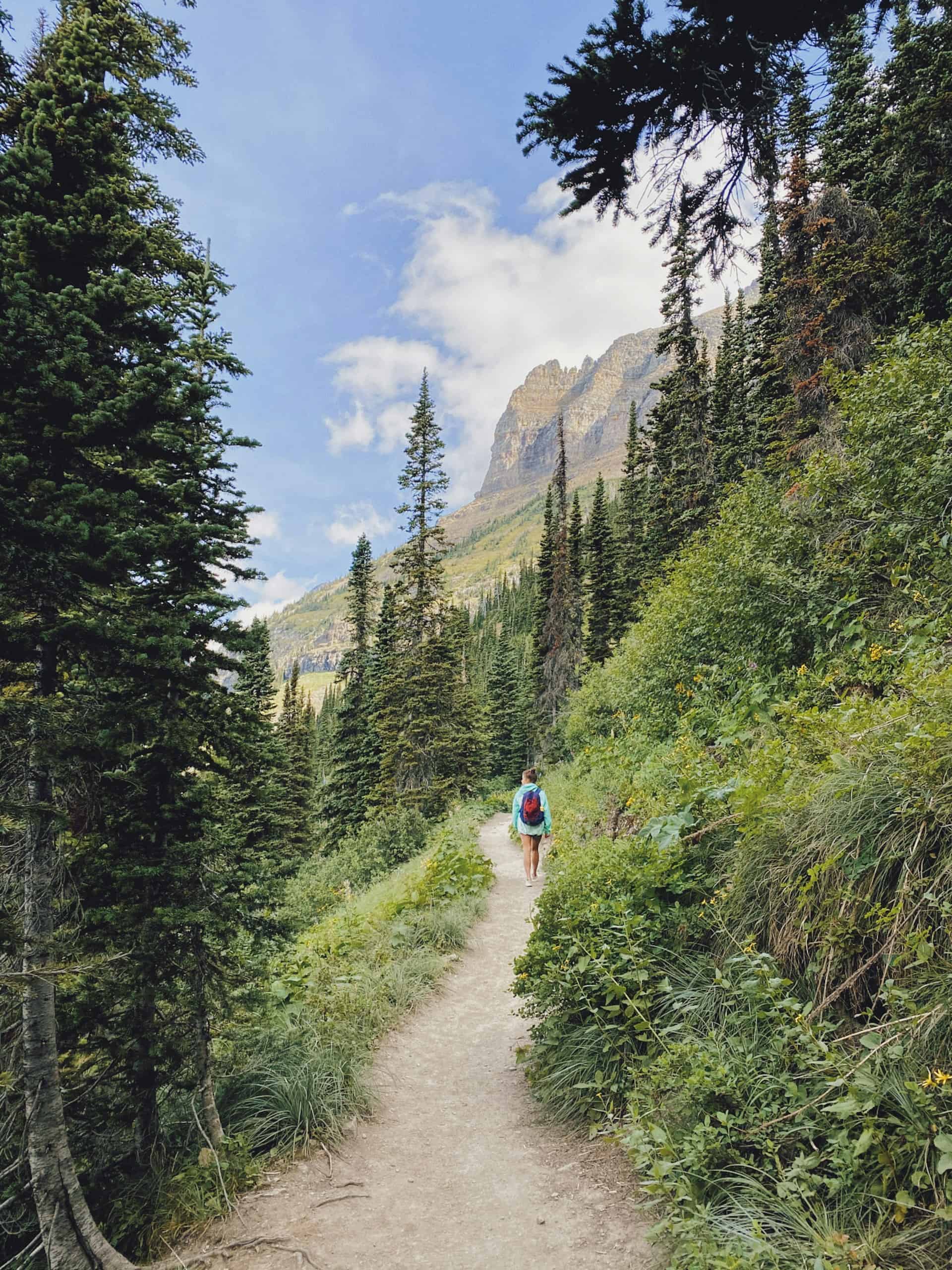
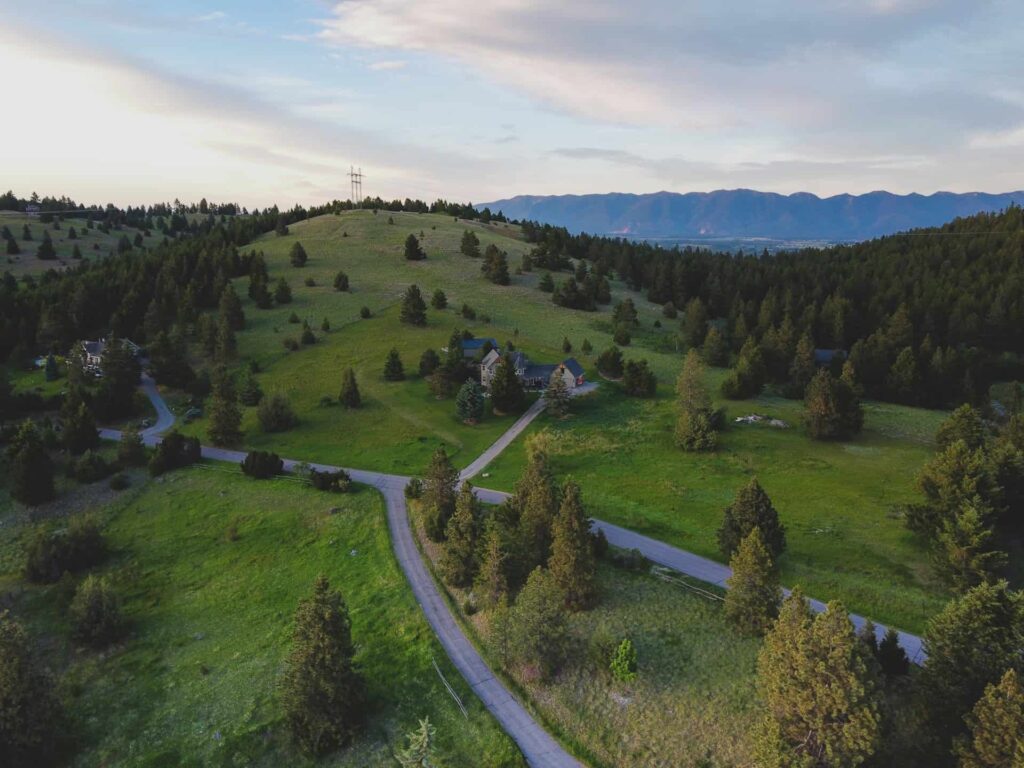
Could the state in which you live impact your overall well-being? This study, which explores the correlation between physical fitness and geographical location, suggests why Living in Montana could boost your health.
Montana, also known as the Treasure State, secures the fifth position among the fittest states in America.
So, If you are feeling the pull of freedom from crowds and contemplating a move to Montana, it might be worth noting that not only will you likely improve your view, but you could also potentially improve your health. How this can occur include social impact, living at a higher altitude, a culture of outdoor enthusiasm, access to thermal hot springs, dark skies, and a more relaxed lifestyle.

Photo by Podu Stricat on Unsplash
1). Social Impact
You’ve heard the saying, “Show me your friends, and I’ll show you your future. “Social Impact Theory”, developed by psychologist Bibb Latané in 1981, explores how the presence of others influences an individual’s thoughts, feelings, and behaviors. According to this article in Psychology Today Psychology Today states that friends/family have the most impact on personal health lifestyle, with 36% reporting that close social ties have the most impact on personal nutrition. Bibb’s theory is grounded in three key principles that predict the potential impact of social influence on individuals.
Strength
The importance or influence of a group or individual determines their impact on others. The stronger the perceived influence, the greater the effect on individuals.
When I think of a hike, I usually envision a distance of one to six miles. I want it to be shaded from the sun and short enough so all I need to bring is water. In contrast, when I moved to Montana, I heard people referring to 27-mile hikes, hiking to camp, and hiking more the next day. Or, referencing a 50-mile bike ride as if it is a perfectly normal thing to do on a Saturday.
When I say this, you might think these people must be athletes… but that is the point; they are not. They are a middle-aged couple next door or the 75-year-old parents of a friend who still enjoy snowshoeing miles uphill to spend the night in a forest service cabin. Needless to say, some of the athletic adventures normal to Montanans leave you thinking that perhaps you are capable of more than you realize.
Immediacy
Immediacy refers to the closeness or proximity in time and space of the influence to the individual being influenced. Influence is stronger when the source of influence is physically closer or more immediate in terms of time. Whether it is for overall health or preparing to climb Mountains during hunting season, no matter where you are in Montana, you will most likely be exposed to a fitness enthusiast.
Number
This principle states that the more people present to exert influence, the greater the impact on the individual, up to a point. This is within your control and will be determined by where and with whom you spend your time. Rest assured, you are sure to find some of the fittest people you have ever met in Montana.

2). Living at a Higher Altitude
Moving from Florida to Big Sky Country taught me a valuable lesson. The first one was the impact on the human body from going from sea level to 4500 above sea level. After arriving in Montana, I experienced the most excruciating headache I have ever had in my life, and I had no idea why. It took me a few days to realize I had altitude sickness, which occurs when you ascend too rapidly and your body struggles to adapt to the change in oxygen levels and air pressure. This experience left me curious. If altitude can have such a profound impact on the body, could there also be some benefits? The answer, as it turns out, is yes. Here are a few…
Weight Loss
Various studies have linked living at high altitudes to potential weight loss. This can be attributed to a combination of factors, including increased metabolism due to lower oxygen levels and a reduced appetite experienced at higher altitudes.
A study published in the National Library of Medicine supports this notion, highlighting that higher altitudes increase basal metabolic rate (BMR). Additionally, an increase in leptin levels, the hormone responsible for signaling fullness to the brain, has been observed. When leptin levels are lower, individuals may experience a decrease in appetite, resulting in a calorie deficit, which leads to weight loss.
Enhanced Physical Fitness
When you travel to higher altitudes, you might initially find yourself gasping for breath, even while climbing a simple staircase. The reduced oxygen levels challenge your body to deliver oxygen to your muscles more efficiently, which forces your body to expend more energy. If you typically train at lower altitudes and then transition to a higher altitude, you can enhance your ability to tolerate increased levels of CO2. This improvement can have a positive impact on your overall endurance and optimize your athletic performance.
Reduced Risk of Heart Disease
Living at higher altitudes has been linked to a reduced risk of death from ischemic heart disease as per South Denver Cardiology. This association may stem from various factors, such as increased physical activity, lower rates of obesity, and dietary differences.
*It is important to note that these findings pertain to individuals without existing heart conditions. If you have a pre-existing heart condition or have recently experienced a heart attack, it is crucial to consult your physician regarding the potential implications of traveling to higher altitudes.
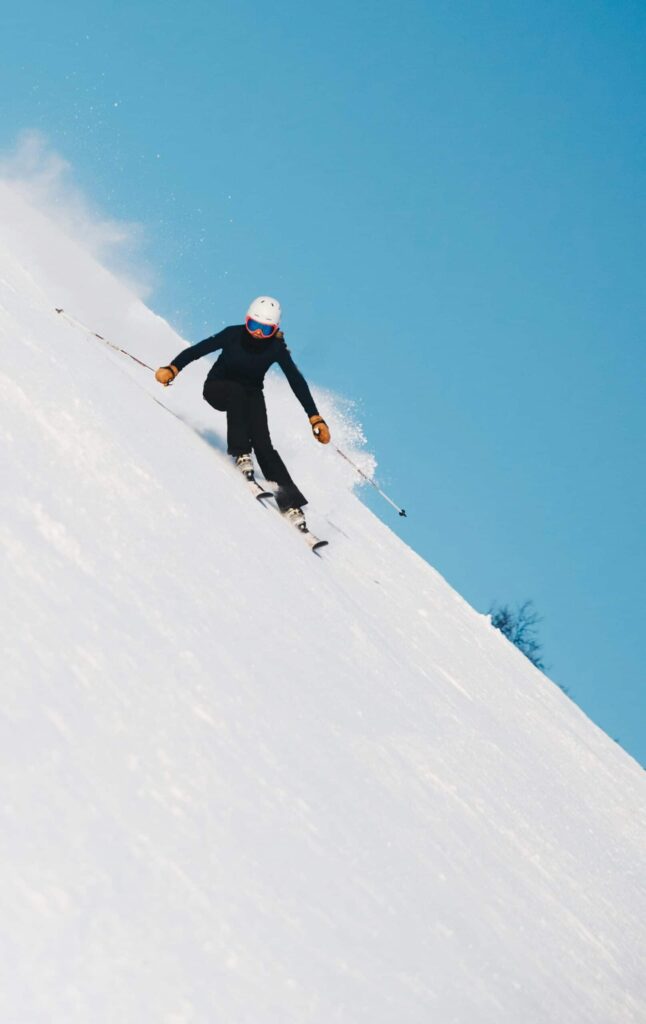
Photo by Nicolai Berntsen on Unsplash
3). Endless Opportunities for Outdoor Recreation
Montana boasts breathtaking landscapes, mountain ranges, and rolling plains, showcasing its stunning natural beauty. From any location in Montana, you’re just a short drive away from experiencing the state’s wide open spaces and enjoying various outdoor activities. With numerous parks, trails, and millions of acres of public land, Montana residents and visitors have a diverse range of choices when it comes to outdoor adventure. Connecting with nature has numerous benefits, including improved cognition, reduced inflammation, and decreased depression and anxiety. It can even help protect your vision and enhance your ability to focus. No matter where you live in Montana, there’s always a way to enjoy the great outdoors.
Outdoor Activities
Are you a fan of winter sports? If so, you’re in for a treat, as Montana is renowned for its long, cold winters and sparkling, powdery slopes. If downhill skiing isn’t your thing, there are plenty of other exciting activities, such as cross-country skiing, snowboarding, snowmobiling, rock climbing, ice climbing, hunting, fishing, horseback riding, paddleboarding on the Yellowstone, and Hiking in the Bob Marshall Wilderness Complex (just don’t forget the bear spray!).
A Culture of Hiking
In larger cities, meeting up with a friend often means going to restaurants or coffee shops. In Montana, it is not uncommon to meet at a trailhead for a hike, especially during the summer, as the long days of sunlight are not to be taken for granted. “Going hiking with the dogs” is not only a form of exercise but also a social activity. ( You bring the dogs because dogs make everything more fun!).
Montana is a hiker’s paradise with abundant trails suitable for all experience levels. For beginners, there are options like Lava Lake near Big Sky, Drinking Horse Mountain Trail in Bozeman, or Palisade Falls in Hyalite Canyon. These trails provide manageable distances and minimal elevation gain, leading to breathtaking summits.
Advanced hikers may seek the challenging terrain of The Beaten Path, which takes you through the Absaroka-Beartooth Wilderness, or the 11-mile round trip to Granite Peak, Montana’s highest point. Both trails demand good physical condition and navigation skills. These are just a small fraction of the hiking trails available to explore.
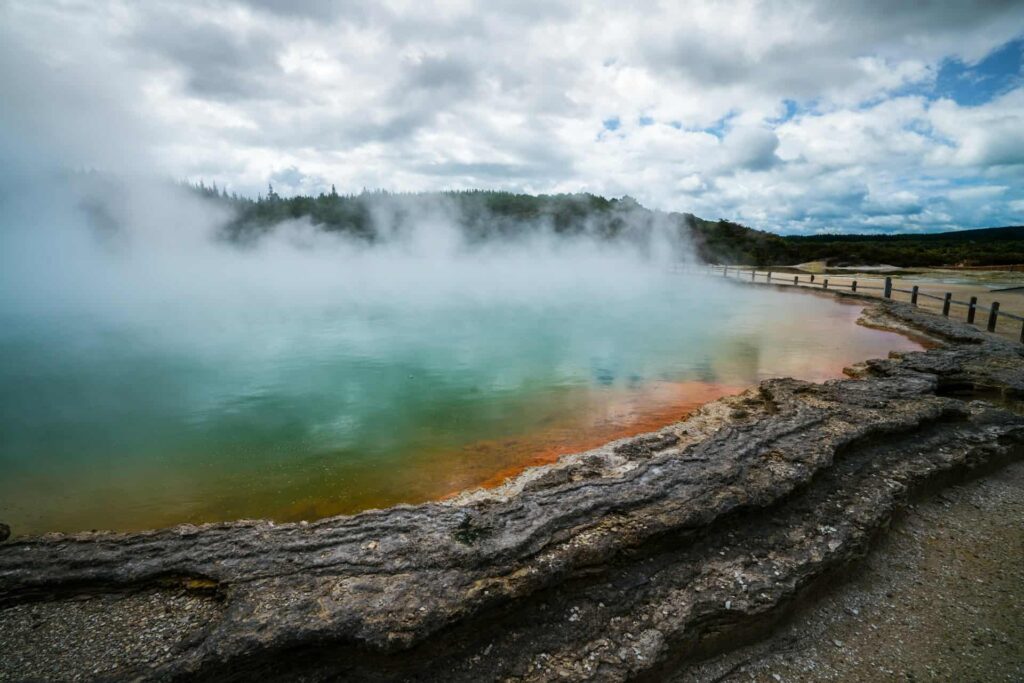
Themal Pool
4). Thermal Hot Springs
Montana isn’t just famous for its challenging trails and a large percentage of fit residents – it’s also home to an abundance of natural thermal hot springs. These springs are an incredible way to relax and rejuvenate. Tucked away in this vast wilderness is Yellowstone National Park, a true hotspot for thermal features. Here, visitors can witness geothermal wonders and soak in waters that have been naturally heated deep within the earth. It’s an experience that seamlessly combines adventure with the tranquility of Montana’s untamed allure. So, why not embark on this unique journey and immerse yourself in the magic of Yellowstone?
Relaxation and Stress Relief
Taking a dip in Montana’s thermal hot springs isn’t just about the physical sensations of warmth and water. It’s a holistic experience that engages the senses, melts away stress, and promotes a profound sense of relaxation. These natural springs are rich in minerals, which many believe have therapeutic benefits, helping to soothe muscle aches and mitigate everyday stress. The tranquil surroundings, often punctuated by the sounds of nature and the sight of undisturbed wildlife, contribute to an atmosphere where one can effortlessly release tension. This natural retreat offers an escape from the frenetic pace of modern life, inviting a deep connection with nature and oneself.
Pain Alleviation
Imagine soaking in the mineral-rich waters of these incredible natural hot springs. Not only do they feel amazing, but they can also work wonders for your body. Whether it’s arthritis or muscle soreness, the rejuvenating waters can help ease aches and pains. Plus, the buoyancy of the water takes the pressure off your joints, giving you some much-needed relief.
Skin Benefits
Geothermal waters contain minerals like silica and sulfur, which have been linked to promoting skin health. Taking a dip in thermal springs can cleanse and enhance the texture of your skin and even provide potential benefits for skin conditions such as eczema and psoriasis.

5). Slower Pace
In my first year in Montana, I remember picking up the local newspaper, and on the cover page was an article entitled “Chicken Lays Giant Egg,” with a picture of a giant egg next to a normal egg. It was a real story as a chicken in the area had indeed, laid a large egg. While it seemed odd that a story about an egg could land on the local paper’s front page, I realized it was a refreshing reminder that my environment had changed dramatically. A story about a large egg was preferable to one in the Orlando Sentinal about the crimes committed that week.
Another memorable moment I have to share was standing in line at a grocery store, observing the cashier showing a couple she was checking out pictures of a moose she had recently seen in Yellowstone National Park. The line was three carts deep, but being in a rush wasn’t her style.
As I left the store parking lot, the bumper sticker on the car in front of me said, “Did you move here to be in a hurry?”
Stress Reduction
If you move to Montana from a big city, you must know you may experience some culture shock. If your norm is the energy of a large city, you will need to turn the volume of that energy down some to adapt. This may seem more stressful initially, but you will eventually realize it is a blessing. As you adjust to a new pace, hindsight sets in, and one day, it may hit you just how chaotic and performance-oriented your life used to be. Then, you take a breath and enjoy that most of Montana could not care less what kind of car you drive or watch you wear. How high your heels are, or what type of purse you carry. It has been my experience that true Montanans and fully adapted out-of-staters appreciate a lack of pretense and a low-key lifestyle.
Lack of Traffic
I can not recall even one time I have been driving down the highway and encountered backed-up traffic. It does happen, but it is definitely not the norm, and typically, there is a very specific cause, such as an accident or atrocious driving conditions due to weather. Interstate 4 was a road I traveled daily when I lived in Florida. Any distraction on the side of the road would cause traffic to back up for miles. Now, when I drive down I-90 in Montana, I can not help but be amazed that it is a highway. Not only is there little traffic, but the view is stunning and changes with the seasons, offering a new, beautiful landscape to drive through every few months.
Enhanced Appreciation
If I had a dollar for every time I said, ” I am so glad I live in Montana,” I would be rich. Living simply allows individuals to savor the beauty of the ordinary, fostering gratitude for the smaller, often overlooked joys of life. This mindset promotes a sense of contentment and well-being that transcends materialistic pursuits.
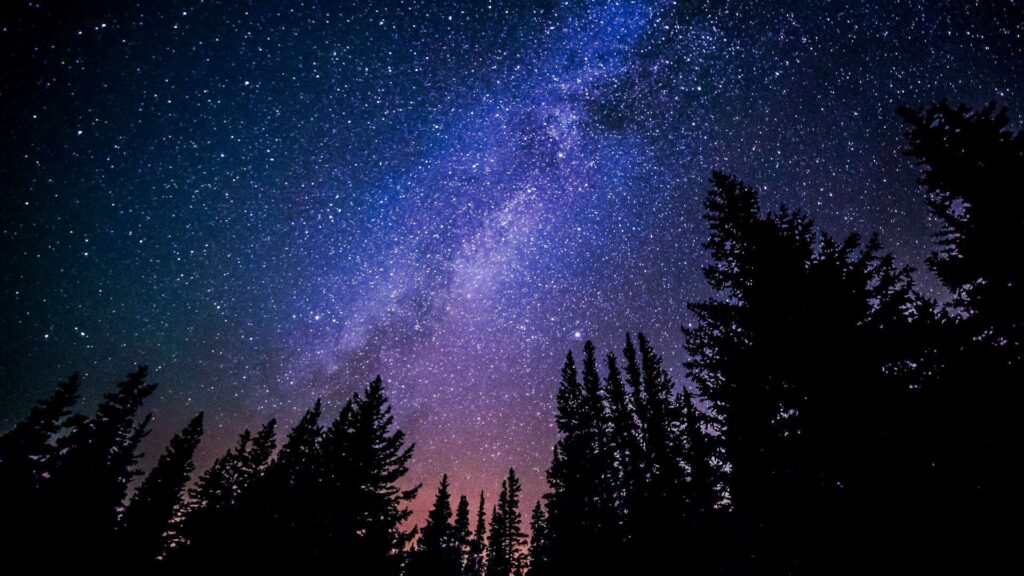
Photo by Ryan Hutton on Unsplash
6). Dark Skies
In an age where artificial light floods our nights, the rare beauty of a dark sky full of stars is not just a visual treasure; it holds profound health benefits for those fortunate enough to live under its canopy. The encroachment of light pollution across the globe has masked the majestic view of the Milky Way for much of the population, with unforeseen consequences on human health. However, locations that preserve the natural darkness of the night sky offer more than just astronomical delight—they are sanctuaries of well-being. Here, we explore the significant health benefits of living in areas where the stars shine bright and the night remains untouched by artificial luminescence.
Enhanced Sleep Quality
The most immediate and critical health benefit of living under dark skies is the significant improvement in sleep quality. Exposure to artificial light at night, especially blue light from screens and streetlights, can severely disrupt our circadian rhythms. This disruption suppresses the production of melatonin, the hormone responsible for regulating sleep-wake cycles. In contrast, natural darkness promotes a healthy melatonin release, enabling deeper, more restorative sleep. The absence of light pollution can thus help combat insomnia and improve overall sleep quality, leading to better mental and physical health.
Reduced Risk of Chronic Diseases
Emerging research links exposure to excessive artificial light at night with an increased risk of chronic diseases, including obesity, diabetes, and certain types of cancer, particularly breast and prostate cancer. The disruption of our biological clock and hormonal imbalances, including melatonin suppression, play a significant role in this risk elevation. Living in areas with minimal light pollution, where the body can adhere to its natural circadian rhythms, may help lower the risk of these conditions. The darkness of the night acts as a protective factor, maintaining the body’s internal balance and guarding against the onset of disease.
Mental Health Benefits
The impact of living under a dark sky extends beyond physical health to encompass mental and emotional well-being. The natural day and night cycle is essential for our psychological health, influencing mood, cognition, and overall mental state. Chronic exposure to artificial light and the resultant disruption of circadian rhythms have been associated with an increased prevalence of mood disorders, anxiety, and depression. Conversely, the tranquility and natural rhythm offered by dark sky environments can foster a sense of peace and well-being, reducing stress levels and promoting mental health.







